New Medical Podcast (Like Winter and the 2024 Red Sox) Offers Bleak Outlook, While Four Books Instill Hope

David Shaywitz
As Bostonians tentatively emerge from the bleak cold of another New England winter and begin to search for signs of spring, we instinctively turn to the Red Sox.
Unfortunately, I am informed by my daughters that the team’s prospects appear dismal this season, so we’ll need to look elsewhere for hope.
We might consider instead Boston’s other great preoccupation: biomedical science.
Here, our prospects are better. I’ll tell you about three recent books, and one forthcoming one, that highlight the promise of medical innovation, and emphasize the urgent need for more rapid progress.
But before we get there, to remind us that we still are in the middle of winter, a few words on a medical podcast that offers a chilly, somewhat grey and gloomy take on medical training and the muted expectations of future clinicians.
“Not Otherwise Specified” podcast, Season 2; Dr. Lisa Rosenbaum, host
Most practicing clinicians I know seem unhappy about both their work and the direction medicine appears to be heading. Common complaints are that medicine has become more bureaucratic, detached, and “corporate” than they hoped and expected when they went through medical school.
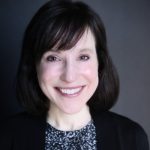
Lisa Rosenbaum, MD; host of “Not Otherwise Specified.”
This dissatisfaction is palpable even (perhaps especially) at the trainee level. Many interns and residents have come to regard medicine as a job, rather than as a calling, as was perhaps the case for previous generations. In fact, some suggest that the idea of medicine as a “calling” represents an insidious corporate ruse, designed to justify the extraction of cheap labor.
In a compelling new season of the New England Journal of Medicine (NEJM) podcast, “Not Otherwise Specified,” Lisa Rosenbaum, a cardiologist and contributor at the NEJM, has tackled this delicate topic with the nuance and empathy that have long characterized her work. You can find the trailer here and follow along.
Through a series of revealing interviews, Rosenbaum explores evolving perspectives on medical training. She discusses the outsized impact of COVID on trainees, who seem to have been pressed into intensive service while many senior physicians and hospital administrators provided nominal oversight from the safety of home – an experience that indelibly scarred and understandably soured many young doctors.
Rosenbaum also explores the difficulty experienced by medical educators as they try to figure out the evolving relationship with trainees, whose expectations for a comfortable and conducive environment can conflict with the intense immersion many educators believe is critical for both learning and successfully transitioning to the real-world practice of medicine.
Educators, according to the podcast, are increasingly wary — if not terrified — of criticism through either social media or satisfaction surveys. Social media has the potential to tarnish the reputation of the institution, while poor marks on satisfaction surveys can interfere with accreditation and cost program administrators their jobs.
Indeed, medical educators are so concerned about being called out that Rosenbaum was nearly unable to find anyone to speak on the record. This fear of professional cancellation evocates the difficulties of challenging emerging orthodoxies that writers such as John McWhorter, Yascha Mounk, Jonathan Haidt, Bari Weiss and others have thoughtfully examined.
What emerges from Rosenbaum’s podcast is a sense that many young doctors feel like they aren’t so much being trained as they are being taken advantage of by a cynical system. Meanwhile, many educators struggle with the concern that trainees are unduly fragile, are not being adequately trained, and seem content with a less visionary (or alternatively: more grounded) view of what it means to be a doctor.
Put another way, many young doctors view medicine is a job, a way to earn a relatively comfortable living. Like other employees, they seek work/life balance, and satisfaction outside the daily grind of demanding patients, endless documentation, and daily disputes with payors
Whether this represents an advance for healthcare, because doctors appropriately have been brought back down to earth, or a setback, because the transcendent aspect of the mission has been lost, remains to be seen.
(My perspective on work/life balance and finding joy in your work rather than exclusively outside of it, here.)
Chasing My Cure, by David Fajgenbaum
If Rosenbaum’s podcast describes where the average doctor is headed, David Fajgenbaum’s “Chasing My Cure,” published in 2019 (I listened to the audiobook, narrated by the author), reminds us of the promise and possibility of medicine at its most outrageously ambitious. A high school athlete and then quarterback at Georgetown University, Fajgenbaum was drawn to medicine, specifically oncology, following the death of his mother from brain cancer while he was a sophomore in college.
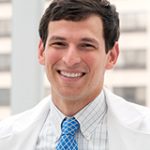
David Fajgenbaum, MD, associate professor of medicine, University of Pennsylvania
Fajgenbaum started medical school at the University of Pennsylvania, but soon found himself dealing with a collection of rapidly worsening symptoms – fatigue, swollen lymph nodes, and then multi-organ failure – that sent him to the ICU and initiated a long diagnostic odyssey.
Eventually, he was diagnosed with Castleman Disease, a rare, devastating lymphoproliferative disorder that was (and unfortunately remains) poorly understood. It seems to be associated with persistently elevated cytokines, often including IL-6. Fajgenbaum found himself on the brink of death multiple times (he was even administered last rites) as he perilously ricocheted between relapse and remission, from severe illness to tentative recovery.
Fajgenbaum also found a new career purpose. When he realized that no one really understood the disease that was trying persistently to kill him, he resolved to approach it scientifically, and coordinate the required foundational work himself. He organized the Castleman Disease Collaborative Network (CDCN) and attended business school to learn the best way to build innovative organizations. He also established a systematic method to diagnose Castleman Disease, successfully fought for a diagnostic code for the illness, and methodically collected samples from patients with the disease, including himself.
The initial therapies he tried – anti-IL-6 antibodies, intense chemotherapy – didn’t deliver sustained remissions. As he reviewed the data from collected blood samples, including his own, he hypothesized that in his cells, the mTOR signaling pathway might be overactive. That led him to try rapamycin (sirolimus) to see if it might help tamp down his persistently elevated levels of inflammatory cytokines.
The result was extraordinary. Before starting on the medicine, Fajgenbaum experienced horrific relapses every nine months or so. Since he started on sirolimus, he’s been relapse-free – for 10 years and counting.
Motivated by this experience, Fajgenbaum, now a physician on staff at the University of Pennsylvania, created an organization called Every Cure. It’s an effort to systematize drug repurposing, with the view that existing drugs might be useful for some of the many patients suffering from conditions, especially rare conditions, for which there’s no treatment.
Fajgenbaum’s book also highlights the complexity of research; while anti-IL-6 antibodies help some Castleman patients, they didn’t help him. Meanwhile, sirolimus, a medicine that transformed his life, sadly wasn’t helpful for some other patients with the disease.
Fajgenbaum exemplifies perhaps the ultimate example of the purpose-driven life, drawn to medicine by the explicit intention to avenge his mother’s death. Over time, his motivation expanded to leveraging biomedical science to defeat Castleman disease, and beyond that, to helping other patients find existing medicines that might help them.
For Fajgenbaum, from the beginning, medicine has always been a calling.
To repurpose the words of Senator Ted Kennedy in 1980: “The work goes on, the cause endures, the hope still lives, and the dream shall never die.”
We the Scientists, by Amy Dockser Marcus
Amy Marcus is a brilliant and unusually sensitive reporter at the Wall Street Journal who covers biomedicine from the perspective of patients. Her latest book (published February 2023; I listened to the audiobook) offers a moving account of the efforts by parents of children afflicted with the fatal lysosomal storage disease Niemann-Pick type C (NPC) to catalyze research into their children’s condition.
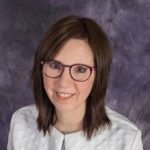
Amy Dockser Marcus, author, “We the Scientists.”
Marcus poignantly contrasts the desperate urgency of NPC parents with the more deliberate pace of traditional science and focuses on the parents’ efforts to become “citizen-scientists” to accelerate the development of scientific understanding and potential treatments.
We learn, sadly, that in even the most motivated hands, science and the pursuit of cures can be incredibly frustrating and disappointing, the process stuttering and often divisive. The challenge of simply willing a cure into being is likely to feel all too familiar to many other patients and advocates, although hopefully, advances in both science and its democratization, as Marcus describes, will lead to the progress that patients urgently require, and families so urgently seek.
Gene Machine, by Venki Ramakrishnan
With the classic exception of James Watson’s The Double Helix, scientific autobiographies tend to offer a gauzy, somewhat airbrushed account of the author’s personal story and scientific insights, a stylized rendition of the hero’s journey. Jennifer Doudna’s A Crack in Creation, published in 2017, is an example of this archetype.
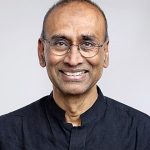
Venki Ramakrishnan, Nobel Prize-winning structural biologist
In the words of Marcus, who reviewed it for the Wall Street Journal, Doudna (who shared the Nobel Prize in 2020 for her pioneering work on CRISPR) “offers little insight into how the human side of science—fights over credit, the potential for profit, a desire for recognition—may affect the presentation or analysis of data.”
In Gene Machine (2018; again, I listened to the audiobook), Venki Ramakrishnan – who shared the 2009 Nobel Prize for his work on the structure of RNA – affords us at least a glimpse into the human drama as shares the story of his career, emphasizing the many turns of fortune that led to his eventual prize-winning work.
While not as brazen as Watson (famous for sentences such as “I have never seen Francis Crick in a modest mood”), Ramakrishnan discusses his insecurities about recognition, his irritation with other researchers, his initially reluctant but ultimately impassioned campaign for the Nobel, and his view of prizes in general – particularly the seemingly arbitrary and outdated criteria associated with how they are often awarded.
His depiction of top researchers as frenemies engaged in intense “coopetition” as they build upon each other’s work while aggressively seeking to be the first to uncover an important insight will ring true to – and potentially trigger – anyone who’s spent time in the lab.
Race for a Remedy by Makhdum Ahmed
I was given the opportunity by Makhdum Ahmed – a physician-scientist and drug developer – to preview his first book, Race for a Remedy, due to be published this summer. Ahmed nicely integrates his own journey from academic physician-scientist to industry researcher with the story of several important emerging technologies he’s had a chance to explore: small molecule oncology drugs, cell therapies, and most recently, bispecific T-cell engagers.
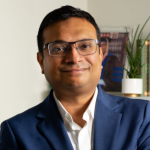
Makhdum Ahmed, physician-scientist-drug developer-author
The last approach, he says, provides an especially promising opportunity to “harness the power of T-cells (and other immune cells) without the need to extract, genetically engineer, and re-infuse a T-cell with the same end result, that is, killing off the enemy, the tumor cells, efficiently.”
He blends in a dash of medical history and a dollop of his own experiences – enough of each to emphasize both the promise and the limitations of emerging technologies. To his credit, he doesn’t shy away from discussing examples of programs he worked on that didn’t pan out. While his prose is less ornate than that of authors like Sid Mukherjee (my WSJ review of Song of the Cell here), Ahmed’s description of his experiences are immediately relatable, and we can’t help but root for his future success.
PS
Readers interested in medical history might also enjoy Death to Beauty, an account of the discovery of Botox and its development as a pharmacological therapy – initially for the eye disorder strabismus. My WSJ review here, with additional, biotech-focused discussion and an emphasis on the concept of field discovery at TR, here.





